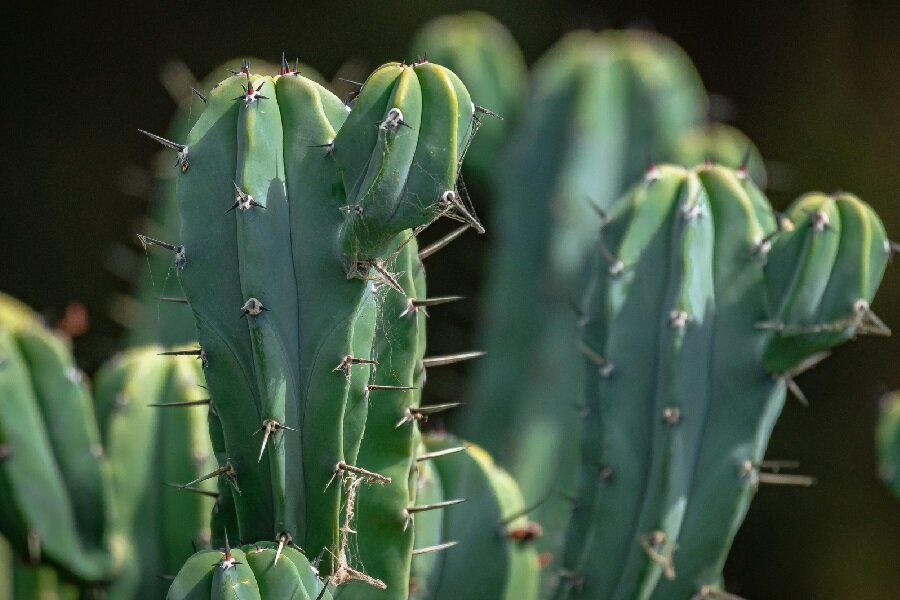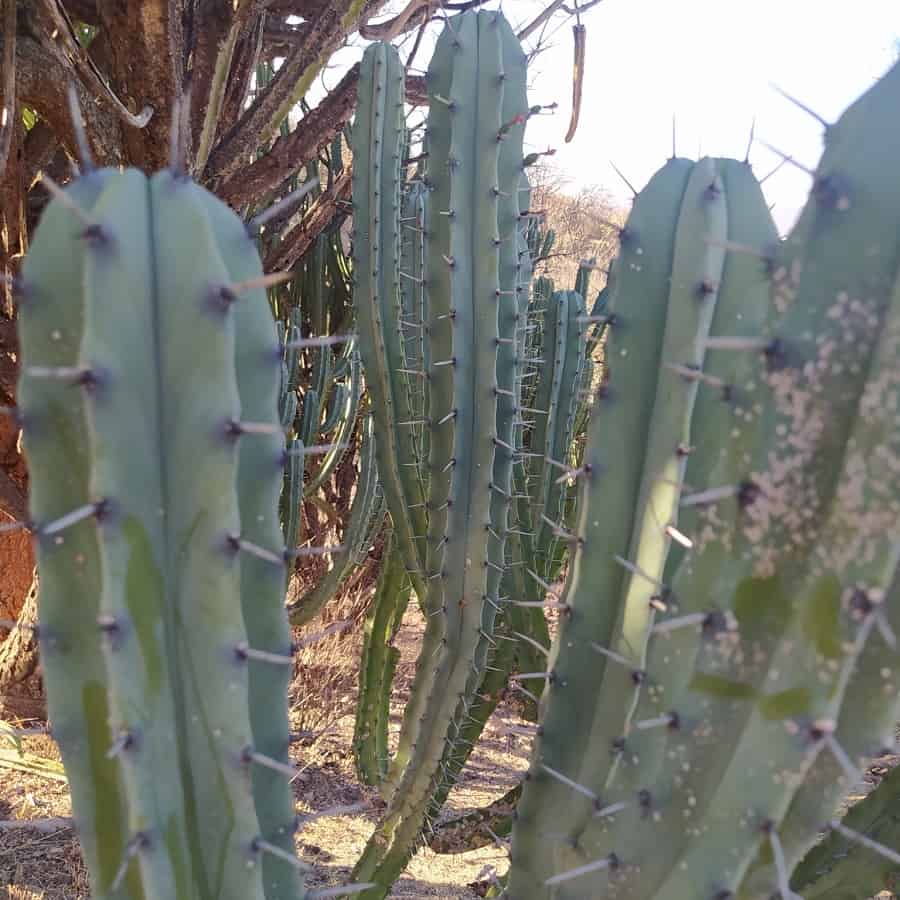Myrtillocactus geometrizans: Characteristics and Care
Have you heard of the blue candle cactus? It’s part of a cactus group called Myrtillocactus. This cool cactus gets its name from its bluish-green color and candle-like stems that branch out. The stems are thick and round with some ribs and spines.
The flowers are green and bloom in early spring, starting in February. Isn’t that neat? Keep reading to learn how to care for this awesome plant!

Related Post:
4 Types Of Myrtillocactus With Pictures
Contents
Caring for Your Blue Candle Cactus
The word “Myrtillocactus” comes from Greek words meaning “cactus” and “small myrtle.” But let’s get to the important stuff – how to keep this plant happy and healthy!
The blue candle cactus grows quickly and can get huge – up to 12 to 16 feet tall! It takes a while for the branches to appear, so don’t worry if yours looks like a single candle at first. That’s why some varieties are called “blue candles.”
The stems have short spines growing from little areas called areoles. The bluish-gray stems are 2 to 4 inches thick, with 5 to 8 ribs appearing over time. When the plant is fully grown, the stems will be densely branched with a wide crown about 8 to 12 feet across. Cool, right?
Light
Like other cactuses, the blue candle cactus needs plenty of sunlight. When it’s young, keep it in an area with light shade, away from direct sun. But once it’s bigger, you can move it to a spot with full sun.
This cactus can handle colder temperatures than some others. In the U.S., it grows well in zones 9a to 11b.
Water
Cactuses are great at surviving droughts, and the blue candle is no exception. In summer, water it thoroughly, then let the soil dry out completely before watering again. Too much water can kill it, so never leave it sitting in water. Also, avoid getting water on the plant itself.
In winter, give it just a little water to keep the soil from getting too cold and wet, which can cause the roots to rot.

Soil
This cactus won’t grow well if the soil stays wet, so use a well-draining soil mix. Adding some gravel can help drainage too. Re-pot your plant every other year as it grows and needs more space.
Fertilizer
Feed your blue candle cactus with a special cactus fertilizer in spring and summer when it’s growing. Don’t fertilize in winter when growth slows down.
Climate
The blue candle can handle temperatures down to about 25°F, but not much colder since it’s semi-hardy. Protect it from frost or it could die. If nights drop below 50°F, bring it inside so it stays warm enough.
Once it’s growing well in a big pot, this cactus is easy to care for. Just give it the right light and water, and it’ll be happy!

Pests and Diseases
Butterflies, moths, bees and birds are attracted to this cactus. So watch out for pests. Too much water can also cause root rot (which may attract birds looking for a drink).
Myrtillocactus geometrizans Propagation Guide
The blue candle cactus is easy to grow from cuttings or seeds. You can get more plants without buying new ones! Here are the steps:
From Cuttings
- In summer, choose a stem and carefully cut it off close to the main plant.
- Let the cut end dry out for 2-3 weeks until a callus forms over the cut area. This prevents rotting.
- Once it’s calloused over, prepare a new pot with well-draining cactus/succulent soil.
- Make a hole in the soil and place the calloused cutting upright into the hole. Pack the soil gently around it.
- Don’t water immediately. Wait about a week before giving the cutting its first drink.
- Place in a bright spot and water whenever the soil has fully dried out, just like you do for the main plant.
- New growth means it has rooted! You’ll have a new blue candle cactus.
From Seeds
- In summer when the plant produces ripe fruits, remove the seeds and clean off any pulp.
- Spread the seeds out to dry completely for several days.
- Fill a seed tray or pot with cactus/succulent soil mix.
- Sprinkle the dried seeds evenly over the soil surface and cover lightly.
- Water the soil gently and place the tray/pot in a warm, bright spot.
- Keep the soil moist until seeds sprout in a few weeks.
- Once sprouted, treat seedlings the same as an adult plant – water when soil is dry.
- After the last frost, you can transplant sturdy seedlings into their own pots.
With just some cuttings or seeds, you’ll have a whole bunch of new blue candle cacti in no time! Pretty cool to grow such unique plants yourself.
